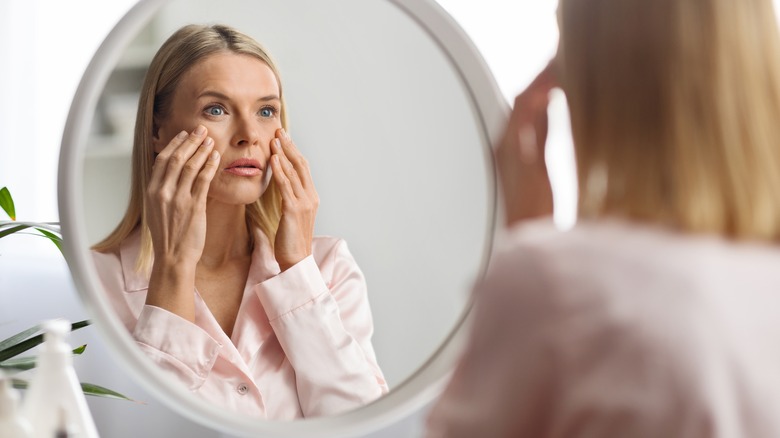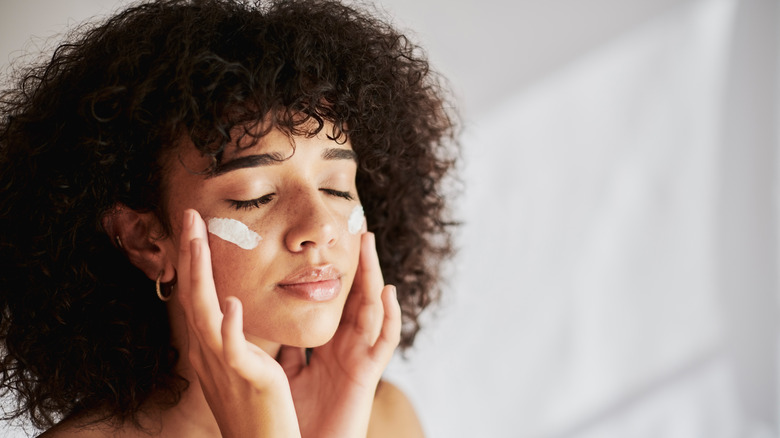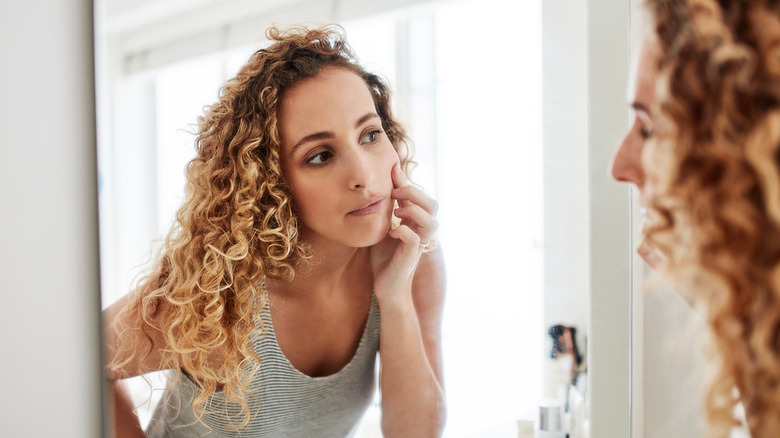How Exactly Can You Tell If You Have Combination Skin, Anyway?
We may receive a commission on purchases made from links.
The complexity of nature never ceases to amaze. Not only is every living creature distinctive in its own right, but sometimes, the same element within one's body may come with variations. This is certainly true of human skin, which is the largest organ in the body. While in some areas, it is dry, in others it is oily or normal to touch. This applies to both your body and your face. In the case of the latter, if you have different skin types on the same surface area, you are said to be part of one of the groups of combination skin.
Wondering how to find out if you have combination skin? There are some tips and tricks for determining what your skin type really is. "People vary from dry to oily depending on the activity of their sebaceous glands, which produce oil," dermatologist Michele Farber told The Klog. "People with combination skin may notice they are particularly oily around their T-zone, or nose and central face, which are areas most packed with oil glands."
Once you know your skin type, you can tailor your beauty regime to fulfill specific needs.
Signs that you have combination skin
There are some signs you should watch for if you are attempting to determine whether you have combination skin. These include seeing signs of oiliness in parts of your face while the others look dry or normal. After you have cleansed the skin, you may only feel the need to moisturize certain areas of the face while the rest are fine as they are. The nose, forehead and chin areas of your face may be visibly oily while the rest doesn't have the same kind of shine. It may also become evident that you have combo skin if, upon using a particular skincare product, you notice different results on different parts of the face.
Some experts point to other tell-tale signs. Francesca Fusco, assistant clinical professor of dermatology at Mount Sinai School of Medicine, says that dandruff can be a possible indicator. "It is very common for women with combination skin to have dry, flaky patches on their scalp as well," Fusco told Allure. Similarly, acne breakouts and dry patches on the face are other indicators. Weather changes also affect your skin by making it go from oily to normal to dry.
How to test your skin type
There is no doubt that these signs are a good way to figure out if you have combination skin. However, if you are keen to test it out specifically and make sure of the actual type of skin you have. The team at Japanese beauty brand Tatcha recommends two easy methods that you can follow.
The first one is "The Bare Faced Method," in which it recommends starting with a clean slate by washing your face and patting it dry. You can have a close look at your skin after about half an hour and look for any shine that emerges in different parts of your skin, including your cheeks, nose, forehead and chin. Let another half hour pass and then take stock of any tightness, which could be an indication of dryness on the skin. If this is coupled with a noticeable shine on other parts of your face, then you most certainly have combination skin. If it is shiny everywhere, your skin type is oily.
Their second method is called the "Blotting Sheet" method which is a quicker way to determine your skin type. For this, all you have to do is pat the blotting paper on different parts of your face. The areas that come away with oil indicate oiliness while those areas which remain non-shiny on the paper show dry skin. If you see a mix of both, your skin type is most likely to be combination.


